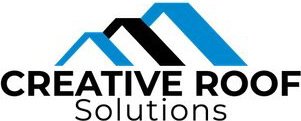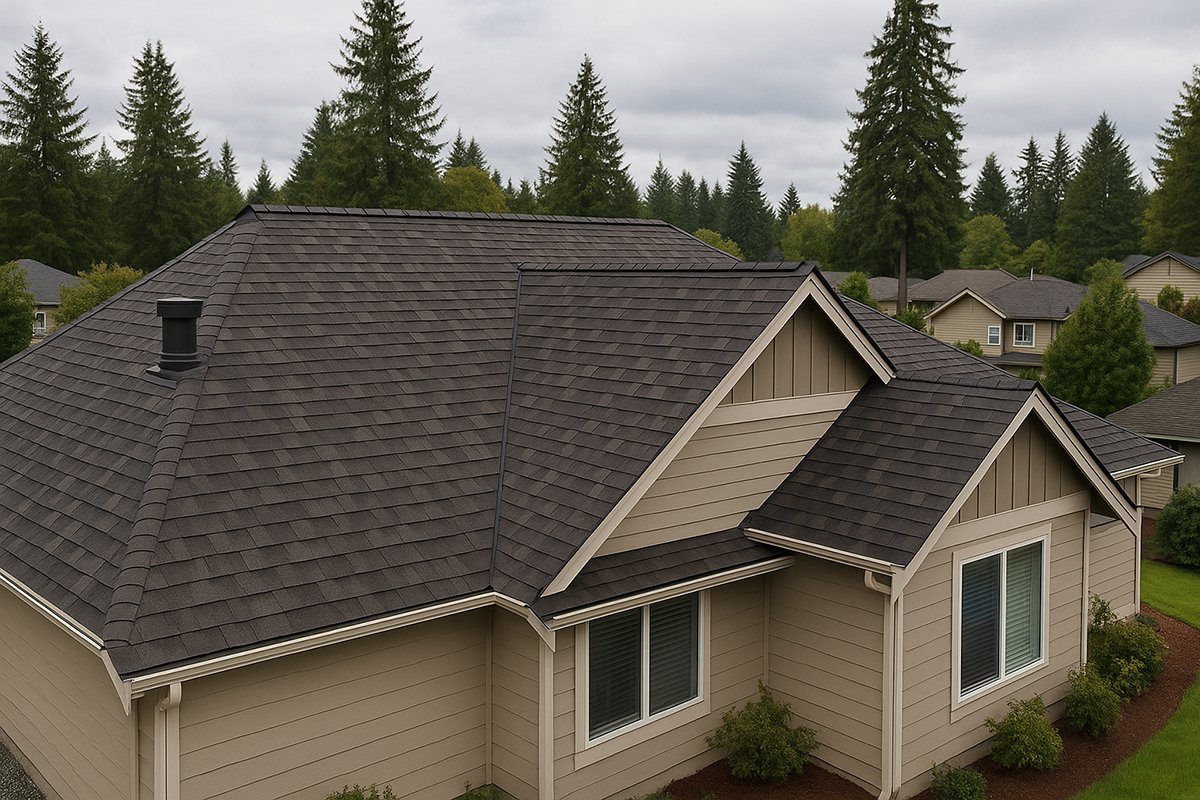Maximize Roof Lifespan: PNW Homeowner's Guide
The Pacific Northwest's unique climate, with its abundant rainfall and lush greenery, presents distinct challenges for homeowners seeking to maximize their roof lifespan in the Pacific Northwest. Your roof is your home's first line of defense, and proactive care is not just a recommendation—it's a necessity for preserving its integrity and value. This guide provides actionable strategies, tailored for PNW conditions, to help you protect your investment and ensure your roof endures for years to come.
Table of Contents
Understanding Your PNW Roof's Adversaries
Moss, Algae, and Lichen: The Green Menace
Water Woes: Relentless Rain and Inadequate Drainage
Wild Weather: Wind, Debris, and Ice
The All-Seasons PNW Roof Maintenance Calendar
Spring Forward: Renewal and Repair
Summer Shield: Prevention and Preparation
Fall Fortification: Bracing for the Wet Season
Winter Watch: Monitoring and Reduction
Mastering Moss: Removal and Long-Term Prevention for PNW Roofs
Gutter Health: The Unsung Hero of Roof Longevity
Weathering the Storm: PNW-Specific Protections
The Importance of Attic Health: Ventilation and Insulation
DIY vs. The Professionals: Knowing Your Limits for PNW Roof Maintenance
Frequently Asked Questions (FAQs) for PNW Roof Care
Conclusion: Safeguarding Your PNW Home Starts at the Top
Understanding Your PNW Roof's Adversaries
The Pacific Northwest climate, while beautiful, is harsh on roofing materials. Consistent moisture, specific types of organic growth, and seasonal weather patterns all contribute to wear and tear. Understanding these factors is the first step in effective PNW roof maintenance.
Moss, Algae, and Lichen: The Green Menace
These organisms are more than just an aesthetic issue; they actively degrade your roof.
How they damage: Moss acts like a sponge, retaining moisture against the roof surface. This can lead to shingle deterioration, lifting, and curling. Algae and lichen also contribute to material breakdown. According to Peak Services, approximately 45% of PNW homeowners face recurring moss problems annually. (Source: peakwashing.com)
Impact on different roof types:
Asphalt Shingles: Prone to granule loss and moisture damage.
Metal Roofs: Can suffer finish damage and trapped moisture if debris accumulates.
Tile Roofs: Moss can lift tiles, allowing water underneath.
Cedar Shake: Highly susceptible to rot and decay from retained moisture.
Water Woes: Relentless Rain and Inadequate Drainage
The PNW's signature rainfall demands an efficient water management system.
Impact of clogged gutters: When gutters are full of leaves and debris, water can back up under shingles, damage fascia boards, and even lead to foundation issues. This is a common issue noted by roofing experts in the region. (Source: pscpdx.com)
Risks of leaks and water damage: Persistent moisture can find its way into your home, causing costly interior damage and promoting mold growth.
Wild Weather: Wind, Debris, and Ice
Seasonal storms bring their own set of challenges.
How storms affect roof integrity: Strong winds can lift or remove shingles, while falling branches can cause direct physical damage.
The threat of ice dams: Though less frequent than in other regions, PNW winters can bring freezing temperatures, leading to ice dams—ridges of ice at the roof's edge that prevent melting snow from draining. This backed-up water can seep under shingles.
The All-Seasons PNW Roof Maintenance Calendar
A year-round approach to PNW roof maintenance is key to extending its lifespan. Here's a seasonal checklist:
Spring Forward: Renewal and Repair
As the rains subside, it's time for inspection and cleanup.
Post-winter inspection: Check for damaged or missing shingles, loose flashing, and compromised seals around vents and chimneys.
Gutter cleaning & repair: Clear out winter debris and inspect for any damage. Consider professional rain gutter services if needed.
Moss assessment: Identify any new moss or algae growth.
Attic ventilation check: Ensure vents are clear and air is circulating.
Summer Shield: Prevention and Preparation
Use the drier months for proactive measures.
Professional inspection: A thorough check by experts can identify issues before they worsen. Book a comprehensive roofing inspection for peace of mind.
Trim overhanging branches: Reduce debris accumulation and physical damage risk.
Check for shingle wear: Look for curling, cracking, or granule loss.
Clear debris: Remove any accumulated leaves or pine needles.
Fall Fortification: Bracing for the Wet Season
Prepare your roof for the impending rain and wind.
Gutter and downspout deep clean: Ensure they are completely clear for optimal water flow. This is a crucial step for professional rain gutter services in PNW homes.
Inspect/reinforce flashing: This is a common area for leaks.
Check insulation: Proper attic insulation helps prevent ice dams.
Preemptive moss treatment: Consider options if moss is a recurring issue. Explore professional maintenance services.
Winter Watch: Monitoring and Reduction
Stay vigilant during the coldest, wettest months.
Monitor for ice dams: Especially after snowfall followed by thawing and refreezing.
Check attic for moisture: Look for signs of leaks or condensation.
Safe snow removal techniques: If heavy snow accumulates, only use methods that won't damage your roof. Professional assistance is often the safest choice.
Mastering Moss: Removal and Long-Term Prevention for PNW Roofs
Moss removal in the Pacific Northwest is a critical aspect of roof care. Its persistence requires specific knowledge and techniques.
Why Moss Flourishes in the Pacific Northwest
The PNW's cool, damp, and shady conditions are ideal for moss growth. It thrives on the north side of roofs and in areas shaded by trees. Oregon State University Extension service highlights that moss retains moisture, which can degrade shingles over time. (Source: news.oregonstate.edu)
DIY Moss Removal: Techniques by Roof Type
Safety first: Always use proper safety gear when working on a roof.
Asphalt Shingles: Gently brush or sweep moss off when dry. Avoid aggressive scraping or pressure washing, which can remove granules. Oregon State University Extension recommends avoiding high-pressure washing on shingles. (Source: extension.oregonstate.edu)
Metal Roofs: Use a soft brush. Specific cleaners designed for metal roofs can be applied. A very low-pressure wash might be acceptable, but consult manufacturer guidelines.
Tile Roofs: Exercise caution. Broken tiles are a risk. Gentle brushing and appropriate cleaning solutions are best.
Cedar Shake Roofs: These are very delicate. Only use very gentle methods and consider professional help. Specific treatments for wood may be needed.
Chemical vs. Manual Removal: Evaluating Your Options
Pros of Manual: Less environmental impact, immediate visual results.
Cons of Manual: Labor-intensive, can damage roofing if done incorrectly.
Pros of Chemical: Can be more effective for widespread moss, may offer longer-lasting results. Products containing zinc sulfate or baking soda can be used. (Source: roofportland.com, pesticide.org)
Cons of Chemical: Potential environmental concerns with runoff, some products can be harsh on roofing materials or surrounding plants. Always follow product instructions carefully. Soft washing is generally preferred over high-power washing. (Source: peakwashing.com)
Professional Moss Removal: When and Why to Call Experts
Consider professionals if:
Your roof is steep or high.
Moss coverage is extensive.
You're unsure about the safest, most effective methods for your roof type.
Creative Roof Solutions offers professional moss removal services with experienced technicians.
Long-Term Moss Prevention Ideas for PNW Roofs
Zinc/Copper Strips: Installed along roof ridges, these metallic strips release ions during rainfall that inhibit moss growth downslope.
Maintaining Sunlight and Airflow: Trim overhanging tree branches to allow more sunlight and air circulation, making the roof less hospitable to moss.
Choosing Moss-Resistant Roofing Materials: When it's time for a roof replacement, ask about shingles with built-in moss inhibitors.
Gutter Health: The Unsung Hero of Roof Longevity
Often overlooked, gutters play a vital part in protecting your roof and home, especially in the rainy PNW. Effective gutter cleaning PNW practices are essential.
The Vital Role of Gutters in the PNW's Rainy Climate
Gutters channel rainwater away from your roof, walls, and foundation. Properly functioning gutters prevent:
Water backup under shingles.
Fascia and soffit rot.
Foundation damage.
Basement flooding.
Landscape erosion.
Gutter Cleaning: How Often and Best Practices
Frequency: At least twice a year in the PNW – once in late spring and again in late fall after leaves have fallen. Homes with many surrounding trees may need more frequent cleaning.
Best Practices: Remove debris carefully, flush downspouts to ensure they're clear, and inspect gutters for any damage during cleaning.
Identifying Gutter Problems: Leaks, Sagging, and Damage
Look for:
Sagging or pulling away from the house.
Visible cracks, holes, or rust spots.
Water stains or peeling paint on siding below gutters.
Water pooling around your foundation.
Gutter Repair and Replacement Considerations
Minor leaks can sometimes be sealed, but significant damage, widespread rust, or extensive sagging often means replacement is more cost-effective. Creative Roof Solutions provides professional gutter repair and replacement services.
Are Gutter Guards Worth It in the Pacific Northwest?
Gutter guards can reduce the frequency of cleaning by preventing large debris from entering. However, they are not a "set it and forget it" solution; they still require inspection and occasional maintenance. The heavy needle fall from conifers in the PNW can sometimes challenge certain guard designs. Discuss options for gutter guard installation with a professional.
Weathering the Storm: PNW-Specific Protections
Pacific Northwest storms, with their characteristic wind and rain, demand specific roof preparations and post-storm checks.
Pre-Storm Preparations
Ensure gutters are clear.
Secure loose items in your yard that could become airborne.
Trim any weak or overhanging branches near your home.
Post-Storm Roof Inspection Checklist
From the ground: Look for missing or damaged shingles, bent flashing, or debris on the roof.
Check gutters: Ensure they haven't been damaged or pulled loose.
Inspect attic: Look for signs of new leaks or water stains.
Perimeter check: Look for roofing material granules around the base of your home.
Dealing with Wind Damage and Debris
Promptly address any dislodged shingles or flashing to prevent water intrusion. Safely remove large debris. If damage is significant, call for roof repair services.
Ice Dam Solutions: Prevention and Safe Removal
Prevention: Proper attic insulation and ventilation are key to keeping the roof surface temperature consistent, reducing the chance of ice dams.
Safe Removal: Avoid using salt or chipping away at ice, which can damage your roof. Steaming is a safe professional method. If you suspect an ice dam, consult with professionals.
The Importance of Attic Health: Ventilation and Insulation
What happens in your attic directly impacts your roof lifespan in the Pacific Northwest.
How Correct Ventilation Protects Your Roof from Below
Reduces moisture buildup: Attic ventilation allows moist, warm air from inside your home to escape, preventing condensation on the underside of your roof deck, which can lead to rot and mold.
Regulates temperature: In summer, it helps expel hot air, reducing strain on your cooling system and preventing shingles from overheating. In winter, it helps keep the roof deck cool to prevent ice dams.
Insulation's Role in Warding Off Ice Dams and Moisture Issues
Adequate insulation on the attic floor prevents heat from your living spaces from escaping into the attic and warming the underside of the roof. This is crucial for preventing the snowmelt-refreeze cycle that causes ice dams.
DIY vs. The Professionals: Knowing Your Limits for PNW Roof Maintenance
While some maintenance is manageable, safety and expertise are paramount.
Maintenance Tasks You Can Safely Address
Cleaning gutters from the ground or a secure ladder (if comfortable and safe).
Visually inspecting your roof from the ground with binoculars.
Clearing low-hanging branches (if easily accessible and small).
When to Call a PNW Roofing Professional
Always prioritize safety. Contact a company like Creative Roof Solutions, serving Snohomish, Skagit, and King Counties, for:
Any work on steep or high roofs.
Moss removal on delicate roof types or extensive growth.
Shingle roof repairs or flashing repairs.
Inspections requiring roof access.
Ice dam removal.
Remember, reputable professionals like us operate with honesty, prioritize safety through proper equipment and training, and maintain clear communication throughout any project. The cost of professional maintenance is often less than 10% of a full roof replacement, making it a wise investment. (Source: nwsurfacecleaner.com)
Frequently Asked Questions (FAQs) for PNW Roof Care
Q: How long should a roof last in the Pacific Northwest?
A: The average roof lifespan in Washington state is around 20 years, but this varies greatly depending on the material, quality of installation, and consistency of maintenance. (Source: homecarecontractors.com) Proactive PNW roof maintenance can significantly extend this.
Q: What is the best way to remove moss from a roof in the PNW?
A: The best method depends on your roof type and the extent of moss. Gentle manual removal (brushing) when dry is often suitable for asphalt shingles. Chemical treatments can also be effective but require careful application. For safety and effectiveness, especially on steep or delicate roofs, consider professional moss removal services.
Q: How often should I clean my gutters in the PNW?
A: At least twice a year: late spring and late fall. Homes in areas with heavy tree cover, especially conifers, might need more frequent gutter cleaning PNW.
Q: Are metal roofs a good choice for the Pacific Northwest?
A: Yes, metal roofs are an excellent choice for the PNW. They are durable, long-lasting, resistant to moss and algae growth (though not immune to debris accumulation), and perform well in heavy rain and wind. They are also a great platform for solar panel installation.
Q: Can I pressure wash my roof to clean it?
A: Generally, no. Pressure washing can damage most roofing materials, especially asphalt shingles (by removing granules) and cedar shakes. Soft washing with appropriate cleaners and low pressure is a safer professional alternative.
Conclusion: Safeguarding Your PNW Home Starts at the Top
Maximizing your roof lifespan in the Pacific Northwest is an ongoing commitment, not a one-time task. By understanding the unique challenges posed by our climate—from relentless moss to seasonal storms—and by implementing a proactive, year-round maintenance plan, you can significantly prolong the life of your roof, protect your home, and save on costly future repairs. Consistent care, including diligent moss management and regular gutter cleaning, is the cornerstone of a healthy, long-lasting roof.
Ready to ensure your roof is prepared to weather the PNW elements for years to come? Creative Roof Solutions, a family-owned business with over 30 years of combined experience, is here to help. We are committed to quality workmanship, affordable pricing, and exceptional customer service. Contact us today for a free inspection or to discuss your PNW roof maintenance needs!




